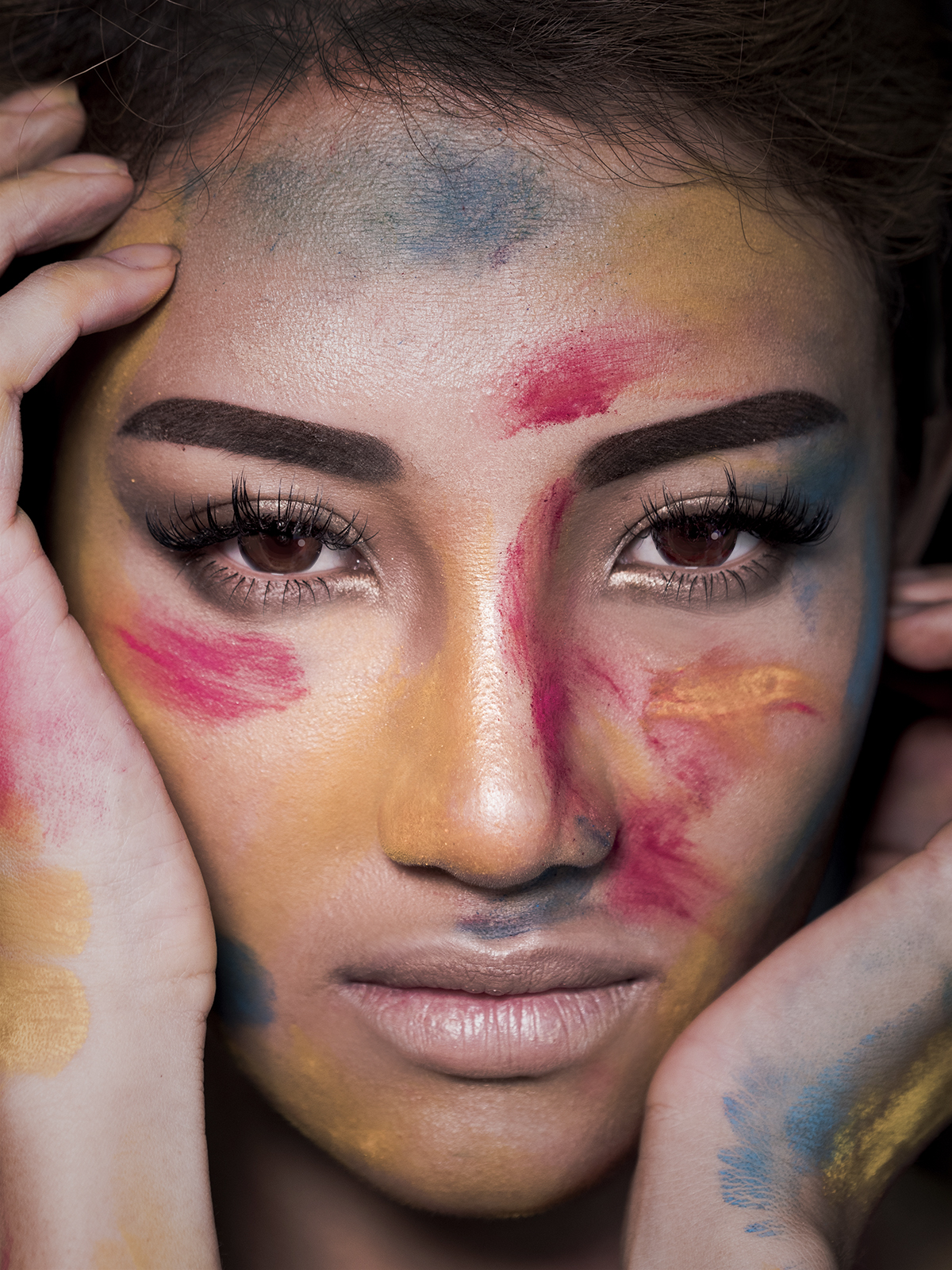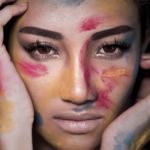
Recently I have been fascinated by 3d abstract art. They look awesome and surreal. I had a notion to renew my blog design (again) and was inspired to do something along the lines of this style. I started researching for tutorials but couldn’t found any good ones for Maya. There were alot for Cinema4d in Deviantart but none for Maya so I decided to make one.

Here is one example of 3d abstract render that I like..

In this tutorial, we will be using Autodesk Maya to model the fractal polygon. You have to have some basic knowledge of Maya and Photoshop to begin this tutorial. I will not be going into details about the lighting and rendering part. This is just a modelling tutorial. 🙂
First, start up Miss Maya and go into the 4 view. Draw a CV nurbs curve in each of the Top, Side and Front view. Make sure they are all in the center of the grid. You can be creative and start drawing curse words or obscene figures. It doesn’t really matter. Close the curves. In the perspective view, you should see the 3 curves that you have drawn intersecting each other.
Select all 3 curves, go to Nurbs > Surfaces> Loft. Mess around with the settings to get the look that you want but keep the section spans at 6 minimum. You should have a good starting model already.
Now, you can move the 3 curves you created earlier independently to further define the shape of the mass glob you are creating. Once you are satisfied, I would advise you to keep the CV curves in a layer and the nurbs surface in another.
Head to Animation, Create Deformers and we will drop in a few deformers. You can use any of them in any order you like. In this tutorial, we will be using Bend -> Twist -> Sine. If you are looking for a petal shaped model, Twist is the deformer you are looking for.
Select the Nurbs surface and click on the Bend deformer. In the right tab, mess around with the values. There are no rules for this, just go crazy.
With the Nurbs surface still selected, click on the Twist deformer this time. Again, mess around the values until you get the shape that you want. The more angle you add, the more petals its gonna create(depending on your CV curves).
Then, with the Nurbs surface selected, click on the Sine deformer. Play around with the values once again. You can add in more deformers if you want. When you are done, perhaps you would like to click on your Loft1 input and add more section spans if your model is looking abit jagged.
Create a camera, set the Focal Length to an impossibly low number like 5 or 10. Spin the camera around, move it until you get an angle that is interesting to render.
Pick a few and start adding your shaders, lights and render away!
For mine, I just drop in a transparent Anisotropic shader with a tight specular. I render out the diffuse layer and saved it as PNG.
Then, I pushed the model into a Render Layer and quickly render out the occlusion.
After that, I go back into my Master Layer, drop in a Black Anisotropic shader with full reflections and I switched to Mental Ray. I added a HDR for the reflections. This will be my reflection pass.
With the 3 passes, I composited them and added a Inner Glow in Photoshop to give it a more translucent effect. I added some colours, threw in a few brushes..patterns..textures.. some typography and there you have it. A 3d abstract art. 🙂
Some of the renders in other 3D galleries have tentacles or swirls around them, you can get them using CV curves extrudes with scaling applied to them.
What I am interested in is how they UV the damn thing and apply textured shaders to them. UV seems to be a nightmare to me at this point. But for a first try, it looks easy and promising enough to try some more complicated stuff. I am pretty sure its just a matter of extruding more surfaces out of the current build of the shape.















Comments (9)
as always, ur always amazing with art and stuff like that!
how’s life? 😀
life’s good 🙂 how are you? hope you are doing fine too..
Ohsum tutorial!
Not as awesome as the two people who first commented on this post. Lol
thread 3
long one….. very very long…long one….. very very long…long one….. very very long…long one….. very very long…
another one
too confusing all! :X
Okay, what a good start however i’m going to take a look at that a touch more. Will show you what more i have found.